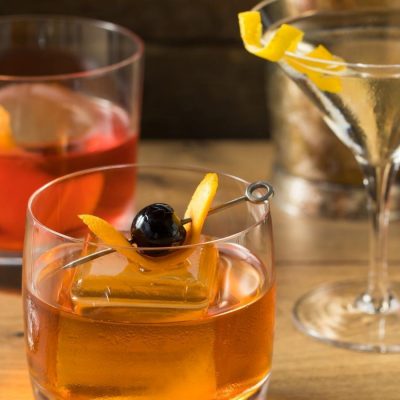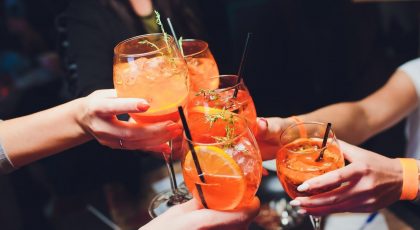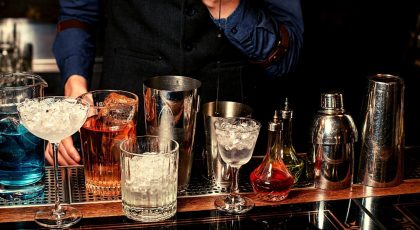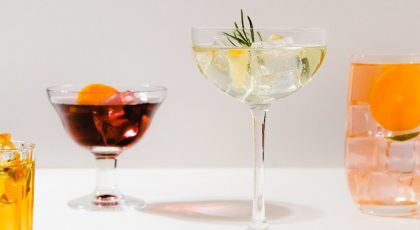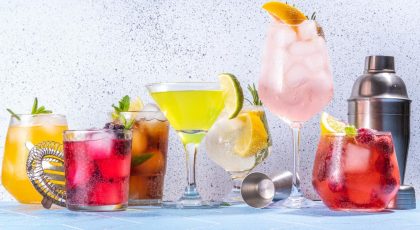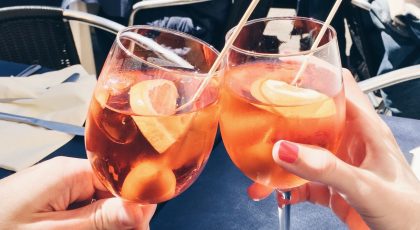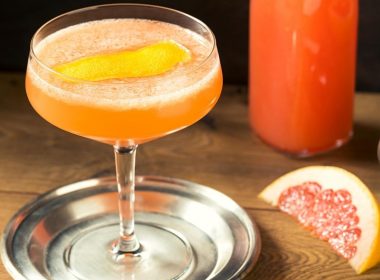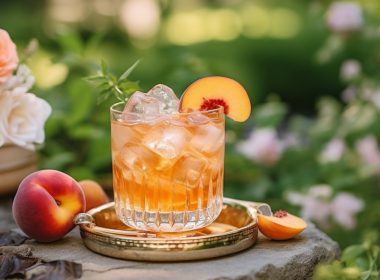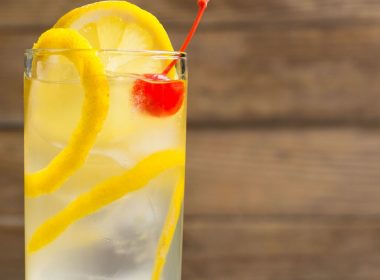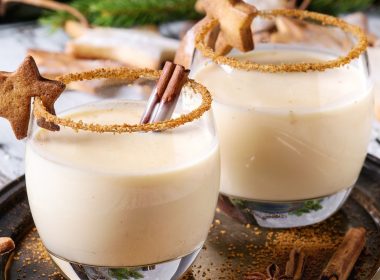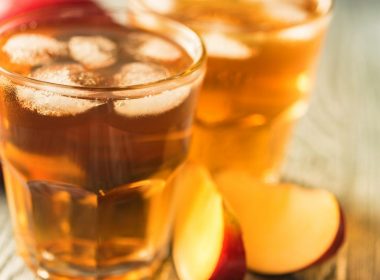What is ABV Anyway?
Yeah. We know. ABV. Yawn. Sounds sciency and boring. Like, who cares, right?
Turns out we do, and after reading this, you probably will too.
Why? Because we all like making informed decisions—and the smallest details matter. Things like whether the chicken you’re having for dinner is organic. If there is any lactose in your creamy vegan pasta at a restaurant. Anxiously wondering what the calorie intake will be for that double-thick milkshake you just ordered. And if the cocktail you’re about to drink is high in alcohol. It’s all about having access to information to make better choices for ourselves.
The great thing about understanding alcohol by volume (ABV) is that you can better guestimate the effect an alcoholic beverage might have on you later, when it’s safe to have more than one and when it’s time to opt for that Uber ride home. Which, by the way, should always be your rule when enjoying a few drinks. Yes. Even if it’s just one. It’s not worth the risk, so don’t be that person.
What is ABV and why it is important
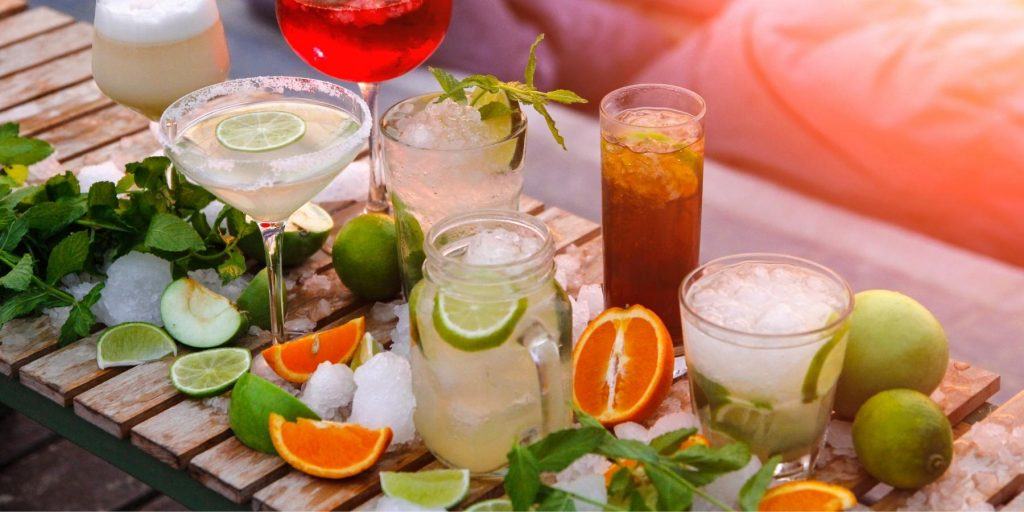
Let’s start with the most obvious. What does ABV stand for? For those who don’t know, ABV means alcohol by volume. The higher the number, the boozier and more potent the drink.
While it’s nothing new for bars to show the ABV of craft beers, it is a new trend to share the levels of alcoholic content in cocktails. It makes sense that alcohol by volume is now a thing. Cocktail menus are more complex than ever, so it’s not surprising that bars all over have started to include details about drink strength. Because more and more people are choosing drinks that actually taste good over drinks that are strong.
But where does ABV even come from? According to history, measuring alcohol dates back to the 16th century when the English government put an additional tax on “proof spirits,” or spirits that contained a relatively high amount of alcohol. And how did they estimate the levels of pure ethanol present back then? By soaking a gunpowder pellet in the liquor, then igniting it. If it caught fire, the drink was strong enough to justify adding extra tax. Pretty groovy job, if you ask us. In 1884 the ABV proof system was established in America.
What is the difference between proof and ABV?

Chances are you’ve seen two numbers on spirit bottles. The first, ABV (explained above), is mostly the international standard, and the second is proof. This type of alcohol measurement varies worldwide.
In the UK, calculations are a little tricky. A 100-proof liquor comes to around 57% ABV. The ratio of proof to ABV is 4 to 7. So, if you multiply the ABV by 1.75, you get the proof. We told you. Tricky.
In the US, things are a bit simpler. The rule of thumb is that proof is double the ABV. So, for example, if the average bottle of rum is 36% ABV, then it is 72 proof. So, a proof spirit is 100 proof (50% ABV) or higher.
Finally, the French have the most fail-proof method (see what we did there?). Developed in 1824, 100% ABV equals 100 proof. So ABV percentage and proof are the same things in France. One of the few things they kept uncomplicated! Merci!
Switching between ABV and proof is quite simple, as alcohol by volume is double the proof. So, for example, if a drink is 40% ABV, then it is 80 proof.
How is ABV measured?
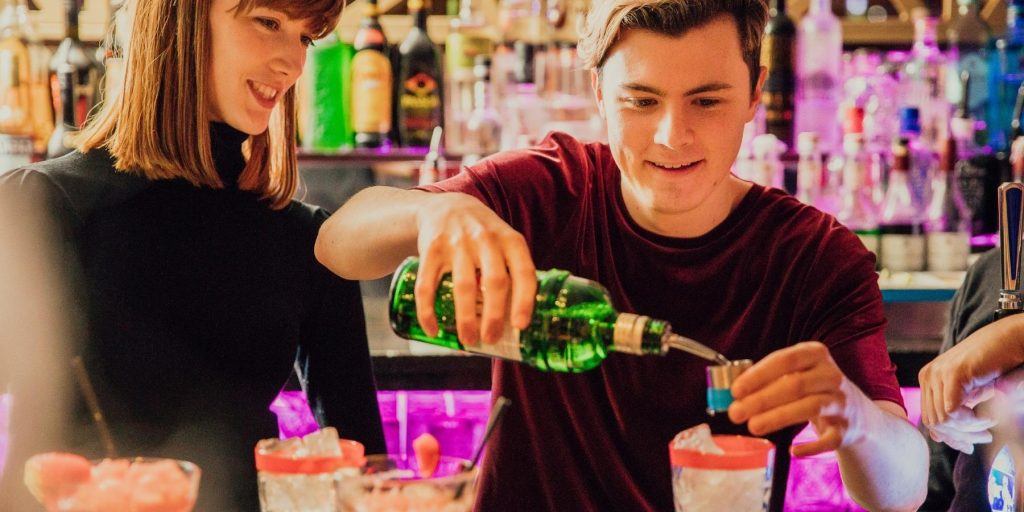
Just because you’re not a bartender doesn’t mean you shouldn’t know how to do your ABVs. That’s just lazy thinking! Understanding alcohol by volume will help you answer that age-old cocktail question: “How strong is this drink?” When you can answer that, you can make more informed choices for yourself.
Measuring the ABV of cocktails can be tricky. There are a lot of variables to keep in mind that will affect the strength of your drink. From different liquors you’re using, to the quantities of non-alcoholic mixers, whether you’re shaking it with ice, adding water and the size of the glass you’re serving it in.
So how do you measure the alcohol by volume in cocktails?
We have a (fairly) simple formula you can use in your guestimations: (alcohol content x liquor volume / total drink volume) x 100 = ABV percentage.
To do this calculation, begin by listing the alcoholic ingredients in your cocktail. Multiply each ingredient by its individual strength. Remember to account for the dilution of the drink when adding water, when it gets shaken and when it gets stirred. The rule of thumb is to allow for ½ oz of total dilution in your calculation.
Does ABV affect the taste of cocktails?
Alcohol by volume absolutely affects the flavour of cocktails. As a general rule, remember: drinks with a higher ABV usually taste more bitter than those with a lower ABV.
ABV on different alcohol
Now that you know what ABV is, here’s a breakdown of your favourite drinks and their ABV percentage.
- Bourbon/Whiskey: 36 – 50%
- Vodka: 40 – 95%
- Rum: 36 – 50%
- Gin: 36 – 50%
- Tequila: 40 – 50%
- Fortified wine: 16 – 24%
- Unfortified wine: 14 – 16%
- Liqueurs: 15%
- Beer: 4 – 8%
- Ciders: 4 – 12.5%
- Red wines: 12 – 15%
- White wines: 5 – 14% (averaging around 10%)
When it comes to cocktails, things get a little muddled. Here’s an ABV list of some of the most popular cocktails ordered in the US to give you an idea.
- Margarita: 26 %
- Martini: 30%
- Old Fashioned: 32%
- Mimosa: 10%
- Moscow Mule: 11 %
- Negroni: 24%
- Cosmopolitan: 27%
- Manhattan: 30%
- Pornstar Martini: 15%
- Long Island Iced Tea: 22%
What are the different factors on how someone handles alcohol?
Did you know that your BAC goes up by 0.02% for every standard drink you consume. But this is highly dependent on the drink you’re having. There’s no chance you can have four martinis and still be under the limit. In this calculation, one standard drink will be a 350ml beer, one 150ml glass of wine, or a 45ml shot of distilled spirits, like whiskey, vodka, or rum.
Everyone is wired differently and the effect of alcohol is based on several variables. These include your sex, weight, family history, and how your body breaks down alcohol. Other factors include your tolerance, whether you’ve had a meal, how quickly you’re drinking, and, of course, the type of drink you’re having.
